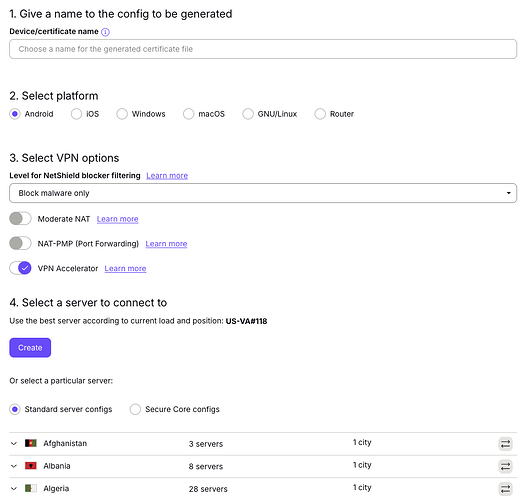If you use public WiFi a VPN is a wise chose…
Perhaps it is just me, but I keep using my phone out in public and if I’m out in public, I’m out in public likely because I’m doing something relatively important, like shopping or hanging out with someone or just good old touching grass and I hate it.
From a security standpoint, as well, it just makes more sense to not use public Wi-Fi for anything truly important too. I guess if you absolutely must, it can be a good idea, though, yeah.
My experience is with PIA. It has turned out faster than many, and none of the ‘warnings’ given have panned out in reality. BTW, one of the reasons I use a VPN is that I also run repos on the same connection, so I need a separate address for other machines in my system.
If I were starting now, I would probably lean towards Mullvad, but as I mentioned no downsides have emerged with PIA over the years - and I appreciate the speed, the number of connections allowed, and their contributing to and early adoption of WireGuard. Hope some of this helps!
I use ProtonVPN without issue. An occasional cloudflare check to see if I am human but that’s it. No issues with streaming or endless cycles of verification checks like I did with PIA. Perhaps give them a try.
Im curious what metadata you’re referring to here - when using a VPN correctly (that is to say, configured to route all traffic including DNS requests via the VPN and with suitable TLS in place) literally the only thing visible to the ISP is:
You have connected to X server (X being your VPN), the connection has lasted for X amount of time, and you have transferred X amount of data.
That tells them absolutely nothing beyond “you were using the internet”, which is, well, duh.
Unless the use itself of VPNs is illegal in your place of residence there’s nothing there.
I’m trying the free version, and it seems promising. I’m able to access USPS.com, which so far no other VPN has been able to do. There are a number of Proton VPN clients offered on the AUR. Which have you found works best?
As wireguard is built into the kernel, I just download a wireguard configuration and use that. They have a section, once you are a member?, of generating wireguard/openvpn configurations that you can download then use.
This is new to me. Do you keep multiple config files to connect to different servers as needed? Do you do something fancy with the config files for LAN access etc.? Or have you just been content with a simple connection to a single Proton VPN server?
Please dont stop because you experience inconvienence, e2e encrypted connections are one of the few things providing significant protections against blanket surveillance, whatever a services reason for preventing your access, we as people should not be being asked or expected to compromise ourselves.
Instead of paying for VPN pay for VPS and host own VPN.
I use Mullvad VPN with Wireguard. It’s been perfect. Better than the big players. And at $5/month, it’s a steal.
I simply use my own Wireguard tunnel as a VPN on my laptop/smartphone so I can use my Pihole with my unbound DNS when I’m on the move.
I used to test Cyberghost as a VPN briefly, but it was usually very slow and I canceled it.
I generate the config files on demand. Lately, I have been content to using the same vpn config (for work) without issue. When I am traveling or when my use case changes, I use different configurations. The website offers several options when generating a Wireguard configuration. See the attached image for example.
As for enabling LAN access, it depends on the wireguard client you use. If you use ProtonVPN’s Linux client, you could enable LAN access. Otherwise you could enable it manually by inserting the following boilerplate in the generated config file:
AllowedIPs = 1.0.0.0/8, 2.0.0.0/8, 3.0.0.0/8, 4.0.0.0/6, 8.0.0.0/7, 11.0.0.0/8, 12.0.0.0/6, 16.0.0.0/4, 32.0.0.0/3, 64.0.0.0/2, 128.0.0.0/3, 160.0.0.0/5, 168.0.0.0/6, 172.0.0.0/12, 172.32.0.0/11, 172.64.0.0/10, 172.128.0.0/9, 173.0.0.0/8, 174.0.0.0/7, 176.0.0.0/4, 192.0.0.0/9, 192.128.0.0/11, 192.160.0.0/13, 192.169.0.0/16, 192.170.0.0/15, 192.172.0.0/14, 192.176.0.0/12, 192.192.0.0/10, 193.0.0.0/8, 194.0.0.0/7, 196.0.0.0/6, 200.0.0.0/5, 208.0.0.0/4, 10.2.0.1/32
type or paste code here
